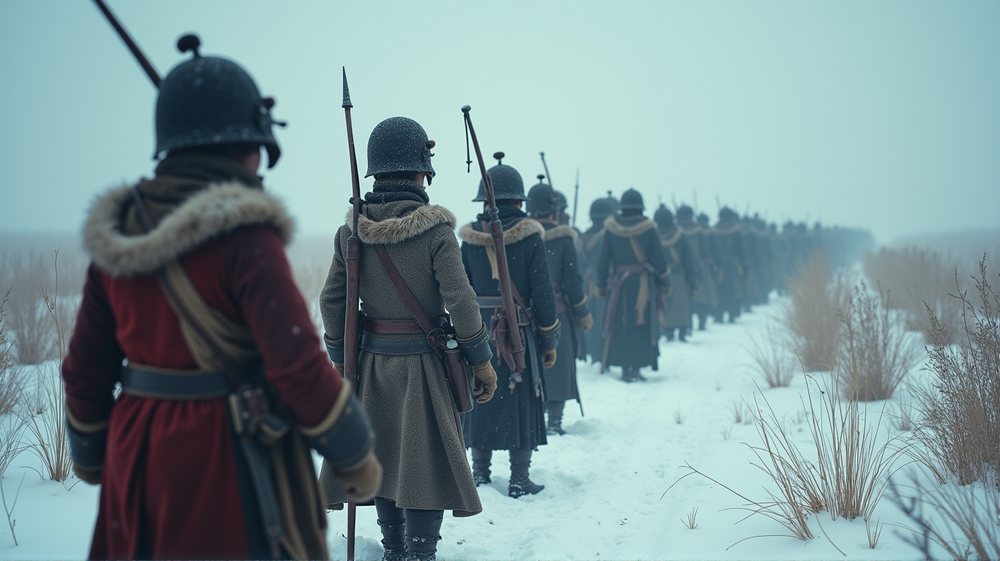In a saga that continues to fascinate historians and enthusiasts alike, new DNA evidence suggests that Napoleon’s army might have faced unexpected microscopic adversaries during their infamous retreat from Russia in 1812.
The Historical Backdrop
As Napoleon Bonaparte initiated his grand invasion of Russia, success seemed almost certain. With over half a million troops, the French Emperor had already secured numerous victories across Europe. Yet, fate had other plans. When they reached Moscow, the city was reduced to ashes—a strategic abandonment by the Russians. The harsh Russian winter approached, food was scarce, and the only option left for Napoleon was to retreat.
The infamous march back saw the army battling not just the freezing temperatures and starvation but now, possibly unseen armies of microbes.
Unveiling the Microscopic Foe
Recent scientific studies have added a tangible layer to the soldiers’ tale of woes. Geneticist Nicolás Rascovan and his team from the Institut Pasteur in Paris discovered DNA residues of fever-causing bacteria in the teeth of Napoleonic soldiers. Using a technique known as shotgun sequencing, they cast a wide net to capture all possible pathogens present in soldiers’ remains, unveiling Salmonella enterica, which causes paratyphoid fever, and Borrelia recurrentis, responsible for relapsing fever.
The Physical and Microbial Confrontation
Eyewitness accounts from the past already noted the rampant diseases among the troops, marked by fever, diarrhea, and pneumonia. The cold, harsh marches compounded their misery. By the time Napoleon made the fateful decision to pull back, logistical nightmares were rife, with subzero temperatures and unyielding terrain serving a deadly cocktail with hunger and disease. According to Science News, this DNA revelation reaffirms what many historians and biologists have long speculated - that microorganisms played an overlooked role in this historical military disaster.
Modern Threads with Ancient Lessons
This study not only brings us closer to understanding the malady that swept Napoleon’s forces but also serves as a crucial reminder of the unseen forces that have shaped history. While pathogens were identified in only a segment of the soldiers, the implication is profound. Coupled with relentless cold and lack of resources, these microbes likely turned the retreat into an apocalyptic journey.
As history asks how any of Napoleon’s soldiers survived at all, modern science bridges centuries, unveiling stories sewn from struggle, survival, and the microscopic enemies that once tripped an empire’s grand ambitions.












